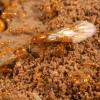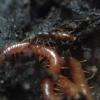- Formiculture.com
- Forums
- Gallery
- Members
- Member Map
- Chat

Greg's Nylanderia sp. Journal (Discontinued)
Started By
Gregory2455
, Sep 10 2014 9:01 PM
nylanderia journal
62 replies to this topic
#21
 Offline
-
Posted October 11 2014 - 2:11 PM
Offline
-
Posted October 11 2014 - 2:11 PM
I think now might be a good idea to move them to a formicarium
Remember Dragon Warrior, anything is possible when you have inner peace. - Master Shifu
Current Queens:
1 Unknown Pogomyemex
1 Solenopsis Xyloni
Current Queens:
1 Unknown Pogomyemex
1 Solenopsis Xyloni
#22
 Offline
-
Posted October 11 2014 - 2:50 PM
Offline
-
Posted October 11 2014 - 2:50 PM
Not yet.
#23
 Offline
-
Posted October 18 2014 - 8:17 PM
Offline
-
Posted October 18 2014 - 8:17 PM
Feeding on fruit flies! (Drosophila melanogaster [Wingless Variation])
#24
 Offline
-
Posted October 19 2014 - 5:48 AM
Offline
-
Posted October 19 2014 - 5:48 AM
I'm curious why you call this N. cf. vividula, Gregory2455? What gives you doubts about its species identity?
#25
 Offline
-
Posted October 19 2014 - 11:59 AM
Offline
-
Posted October 19 2014 - 11:59 AM
I am not exactly sure yet, do you agree this is N. vividula?
#26
 Offline
-
Posted October 19 2014 - 8:37 PM
Offline
-
Posted October 19 2014 - 8:37 PM
Update: 10/19/2014
Another queen got her first worker today, so I now have three of these colonies. ![]()
#27
 Offline
-
Posted October 20 2014 - 11:23 AM
Offline
-
Posted October 20 2014 - 11:23 AM
With the available images, I can't say for sure. Even under a microscope and with well-mounted preserved specimens, this group can be challenging to identify. On the other hand, Nylanderia vividula is quite abundant in the irrigated areas of greater Los Angeles area and much of the Central Valley, all the way up to Sacramento.
#28
 Offline
-
Posted October 20 2014 - 1:00 PM
Offline
-
Posted October 20 2014 - 1:00 PM
These ants remind of Trichomyrmex ants.
#29
 Offline
-
Posted October 20 2014 - 2:17 PM
Offline
-
Posted October 20 2014 - 2:17 PM
They make smaller colonies and are a lot faster. Also, even though it is possible in some spp, polygynic colonies are rare. I meanwhile have a question for everyone. Is the genus Trichomyrmex the new name for all Monomorium spp, or did the genus break in half?These ants remind of Trichomyrmex ants.
#30
 Offline
-
Posted October 21 2014 - 4:52 AM
Offline
-
Posted October 21 2014 - 4:52 AM
All native Monomorium in North America are still in the fairly large part of the genus that has kept the name. In the USA fauna, only introduced T. destructor has been switched to Trichomyrmex, essentially an Australasian genus. There are also some other, smaller groups separated out, not of concern to us in terms of Norht American ants.
Edited by James C. Trager, October 21 2014 - 4:54 AM.
#31
 Offline
-
Posted October 21 2014 - 6:44 AM
Offline
-
Posted October 21 2014 - 6:44 AM
That is interesting.
#32
 Offline
-
Posted October 28 2014 - 9:08 PM
Offline
-
Posted October 28 2014 - 9:08 PM
Video Update: 10/28/2014
Here is the largest colony and its current brood. I just noticed the large pile of new eggs! ![]()
#33
 Offline
-
Posted October 28 2014 - 9:12 PM
Offline
-
Posted October 28 2014 - 9:12 PM
Also, I do not know how concerned I should be about containing these colonies in the future, but today I saw a worker had dug about half way through the cotton. ![]()
Bad quality, I know, the lights were behind it.
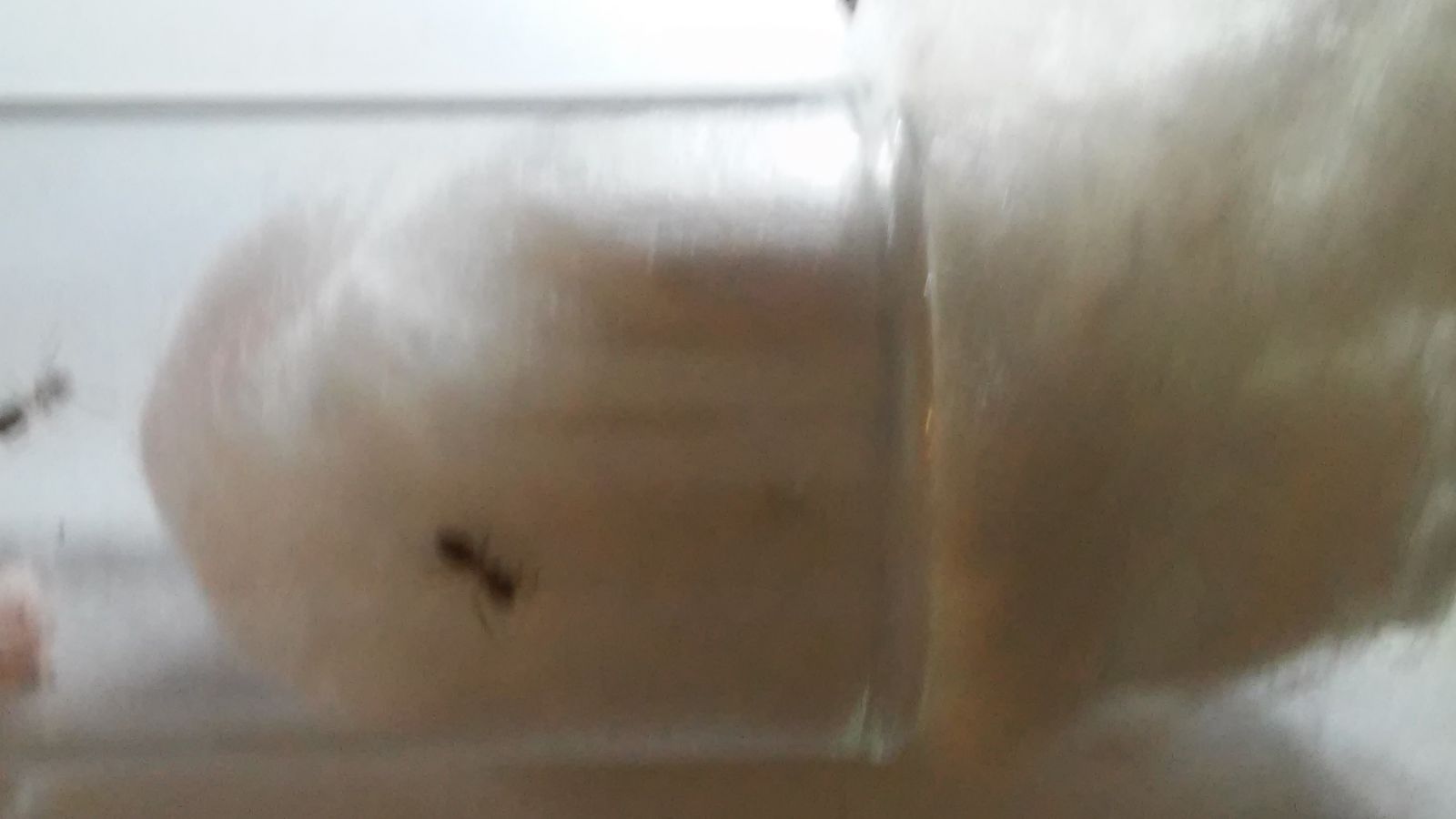
Edited by Gregory2455, October 28 2014 - 9:13 PM.
#34
 Offline
-
Posted October 29 2014 - 5:30 AM
Offline
-
Posted October 29 2014 - 5:30 AM
My S. molesta dug all the way into their water chamber and a bunch of them drowned. I've had S. xyloni do that too once their population got really high.
#35
 Offline
-
Posted October 29 2014 - 6:37 AM
Offline
-
Posted October 29 2014 - 6:37 AM
These guys are digging through the dry side.
#36
 Offline
-
Posted November 3 2014 - 10:27 PM
Offline
-
Posted November 3 2014 - 10:27 PM
Update: 11/3/2014
My largest colony has been moved into a foraging container, and have gotten nice and settled. ![]() These guys can climb over Vaseline, so I am going to need to find a different barrier against them.
These guys can climb over Vaseline, so I am going to need to find a different barrier against them. ![]() Until then, I am just keeping the lid sealed air tight.
Until then, I am just keeping the lid sealed air tight.
#37
 Offline
-
Posted November 11 2014 - 1:15 PM
Offline
-
Posted November 11 2014 - 1:15 PM
Update: 11/11/2014
My smallest colony of these, which is about to get their third worker, is being given to dspdrew, leaving me with two colonies, and about ten queens.
#38
 Offline
-
Posted November 19 2014 - 7:50 PM
Offline
-
Posted November 19 2014 - 7:50 PM
Update: 11/19/2014
I am now sure these are Nylanderia vividula. The largest colony out of the two I have left are at about 50 workers now. ![]()
#39
 Offline
-
Posted November 28 2014 - 10:11 PM
Offline
-
Posted November 28 2014 - 10:11 PM
Update: 11/28/2014
After about a week of just huddling together in their container, the colony finally moved into their new test tube. ![]() They are now over 50 workers.
They are now over 50 workers.
The smaller colony of these is up to about ten workers now, so it look like they are doing great too. ![]()
#40
 Offline
-
Posted November 29 2014 - 9:55 AM
Offline
-
Posted November 29 2014 - 9:55 AM
Lookin' good.
Also tagged with one or more of these keywords: nylanderia, journal
Ant Keeping →
Ant Keeping Journals →
cooIboyJ's Nylanderia vividula journalStarted by cooIboyJ , Sep 6 2025 |
|
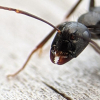
|
||
Ant Keeping →
Ant Keeping Journals →
Ants_Dakota's Camponotus sp. JournalStarted by Ants_Dakota , Jul 13 2025 |
|

|
||
Ant Keeping →
Ant Keeping Journals →
Strickys Formica JournalStarted by stricky_ants , Jun 21 2025 |
|
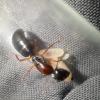
|
||
Ant Keeping →
Ant Keeping Journals →
AntTx's Camponotus sansabeanus JournalStarted by AntsTx , Jun 17 2025 |
|
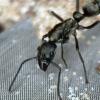
|
||
Ant Keeping →
Ant Keeping Journals →
The Bark Battalion (Liometopum occidentale)Started by AntsGodzilla , Jun 3 2025 |
|
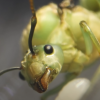
|
0 user(s) are reading this topic
0 members, 0 guests, 0 anonymous users

